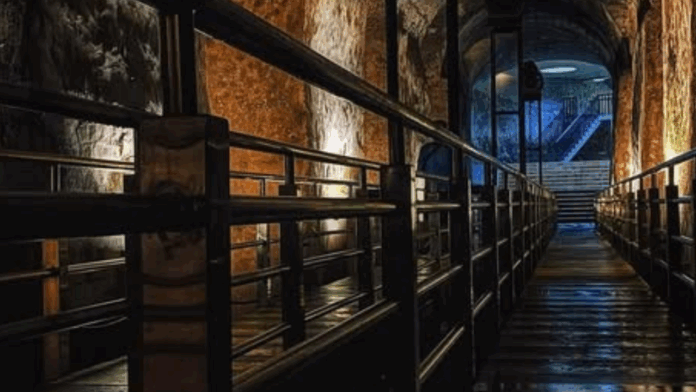At the heart of this story is El Deposito, an underground reservoir built by the Spaniards in the 19th century to support the Philippines’ first modern water system, the Carriedo Waterworks.
Tucked away in San Juan, just past the city hall’s iconic white-and-red tiled roofs, lies the Pinaglabanan Shrine, a monument to the Battle of Pinaglabanan. Ironically, Pinaglabanan translates to “Where the Battle Was Fought,” but today, we’re digging deeper, quite literally.
At the heart of this story is El Deposito, an underground reservoir built by the Spaniards in the 19th century to support the Philippines’ first modern water system, the Carriedo Waterworks. The man behind the vision was Don Francisco Carriedo y Peredo, a Spanish merchant who, in 1743, left 10,000 Pesos (roughly 600,000,000 Pesos in today’s money) in his will to fund Manila’s desperately needed water system.
It took nearly 140 years for his dream to become reality, but the system eventually sourced water from the Marikina River, filtered it through El Deposito, and pumped it into Manila, forever changing public health and sanitation.
Fun fact: The Carriedo Fountain, originally part of the Carriedo Waterworks, has been moved three times before finally settling at Plaza Santa Cruz, in front of the Santa Cruz Church. The fountain, along with El Deposito, are lasting symbols of this revolutionary system.
Today, El Deposito is both a museum and a tunnel access site that draws curious visitors. On the ground floor is an office and a small theater room that’s perfect for school field trips. Going upstairs is an exhibition space packed with artifacts and information about the history of water systems in the Philippines. Aside from old fire hydrants, fountains, and a detailed diorama of the underground reservoir, the museum also showcases relics unearthed by the University of the Philippines’ Archaeological Studies Program in 2016, alongside items found by the National Historical Commission during digs in 2018.
For those wanting to truly step back in time, there is an access tunnel on the side of the museum building. Descend the steps into El Deposito, where you’ll find an immense, echoing space. The pungent smell of age and earth hits, but it’s worth it. The tunnels, where water once settled before being transported to Intramuros, offer a firsthand look at the sheer scale of this historic feat.
El Deposito offers a fascinating glimpse into how something as simple as running water—something we take for granted today—was once a monumental innovation.



